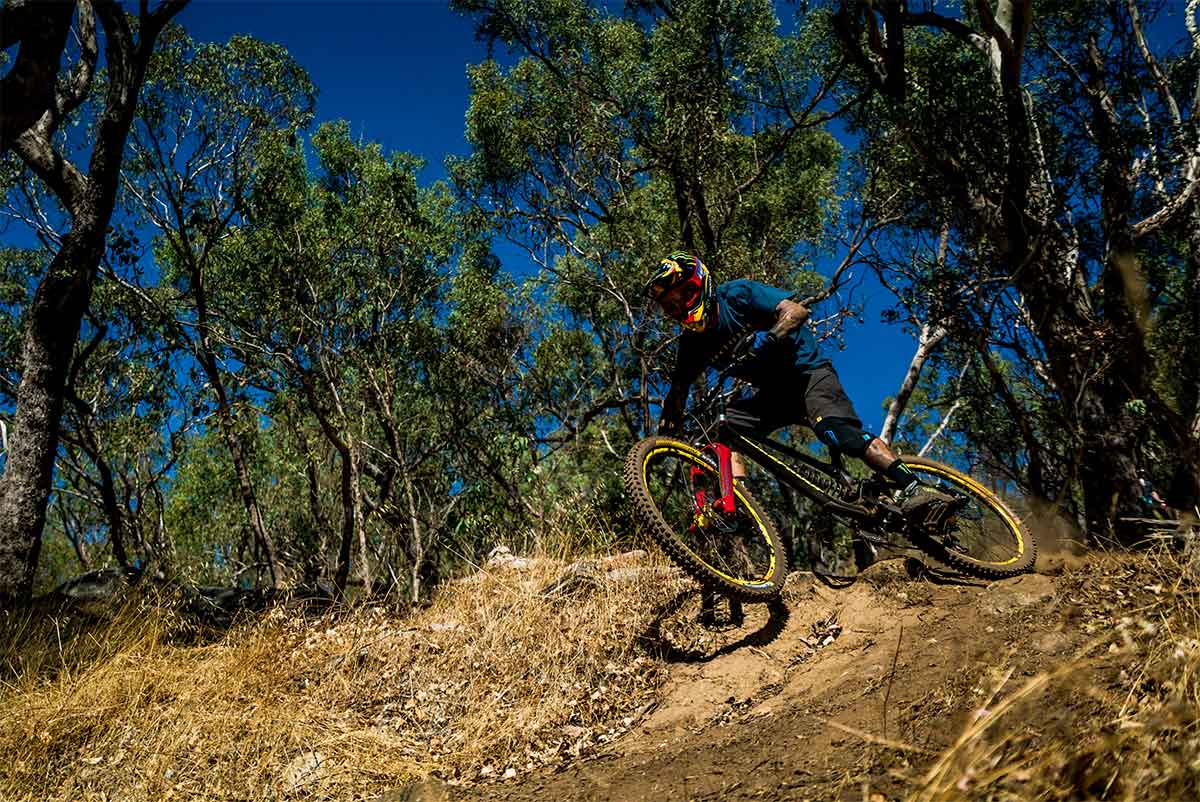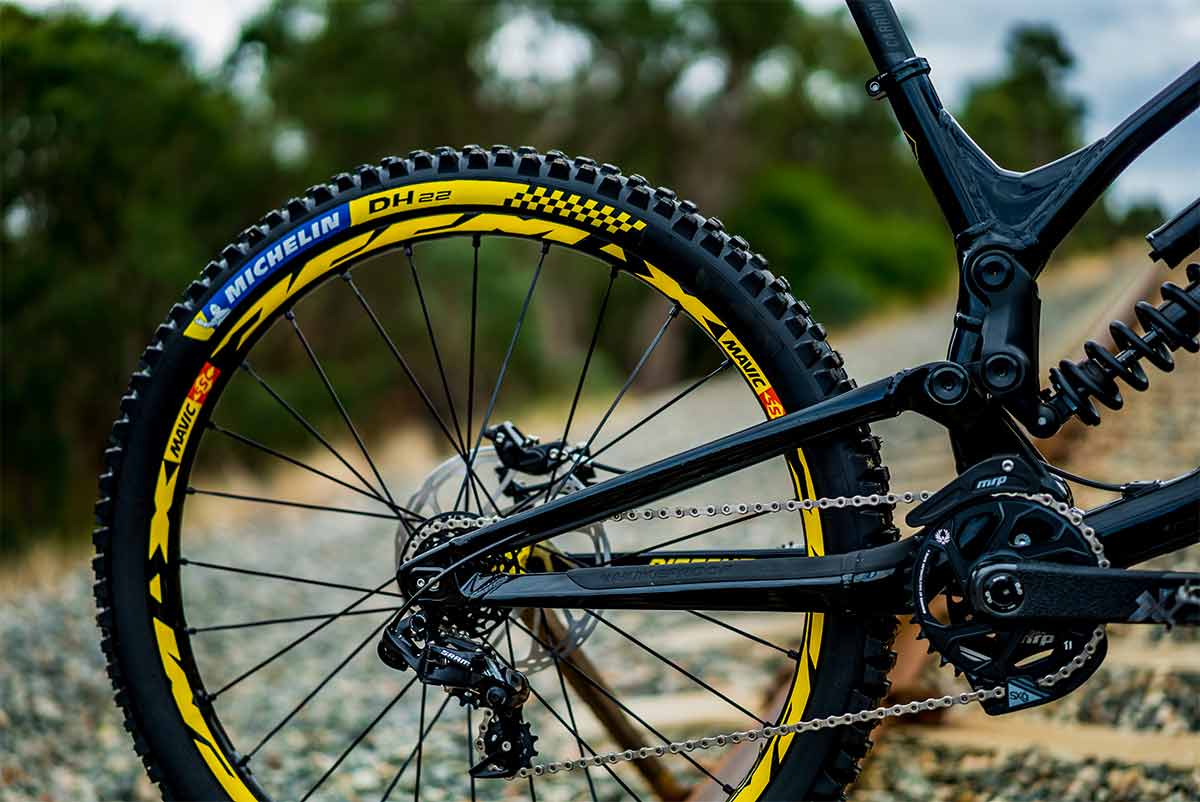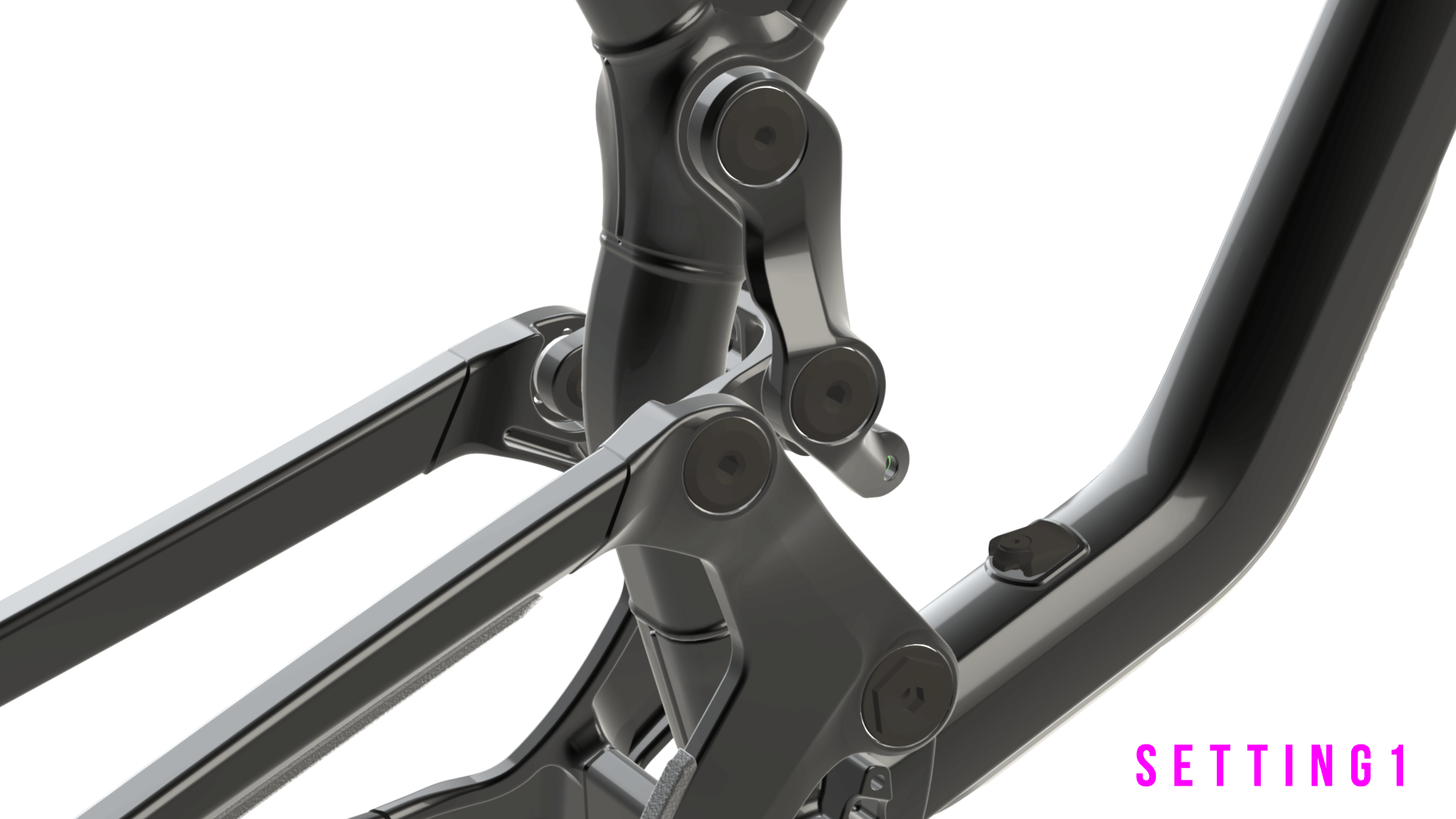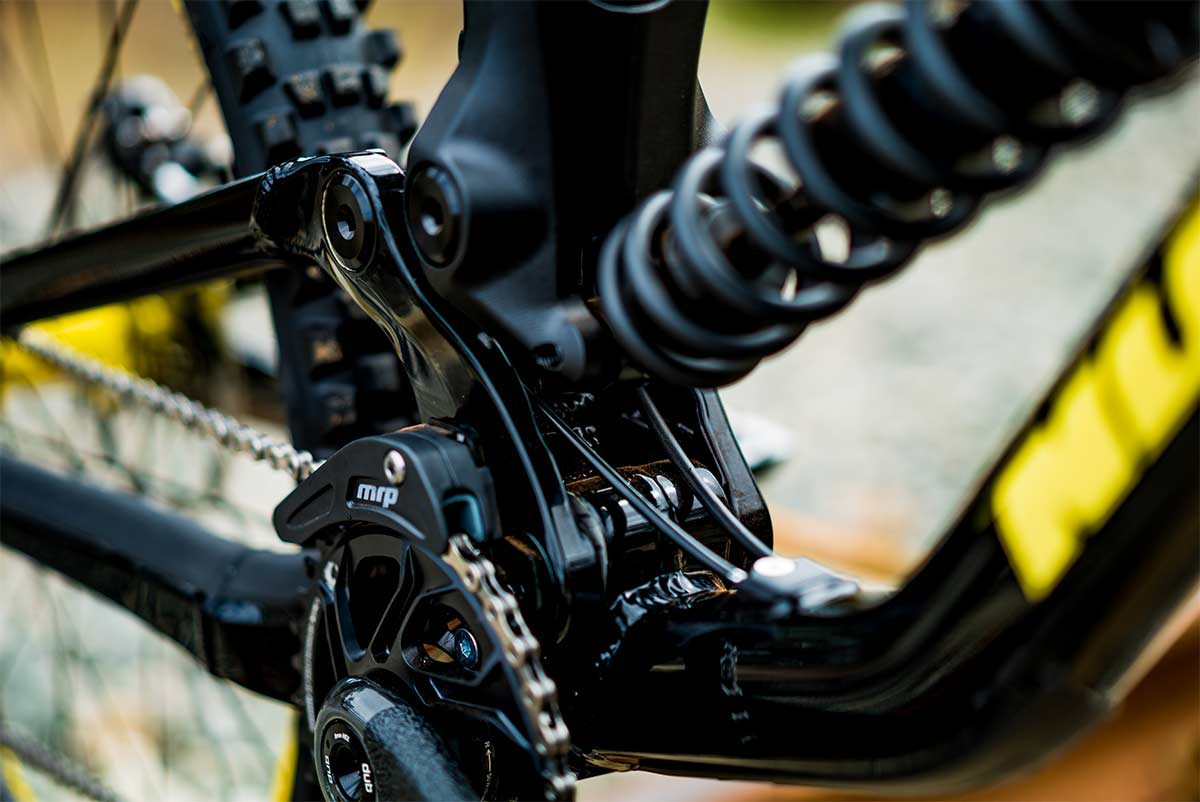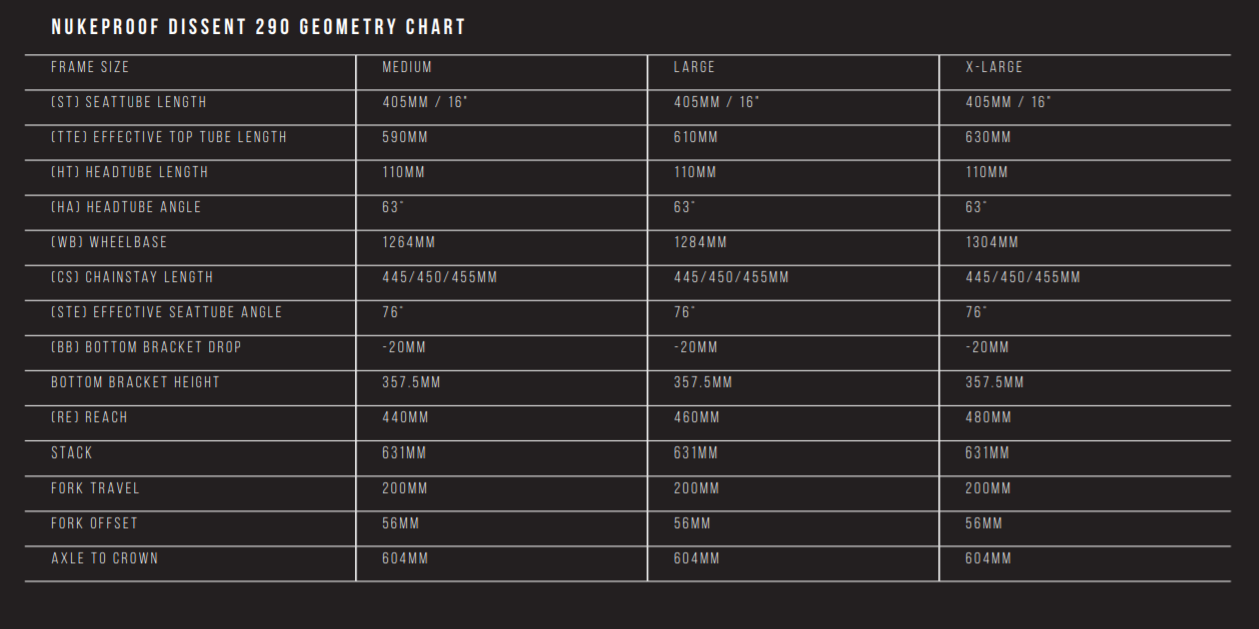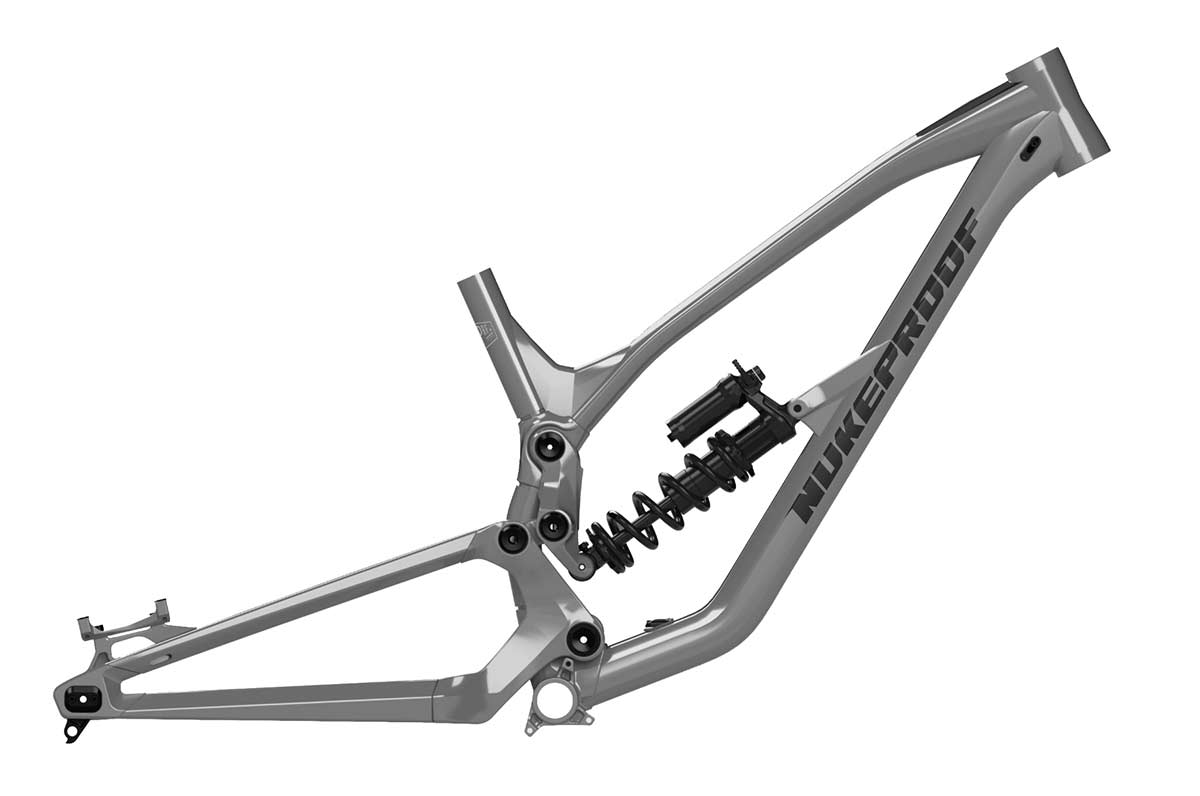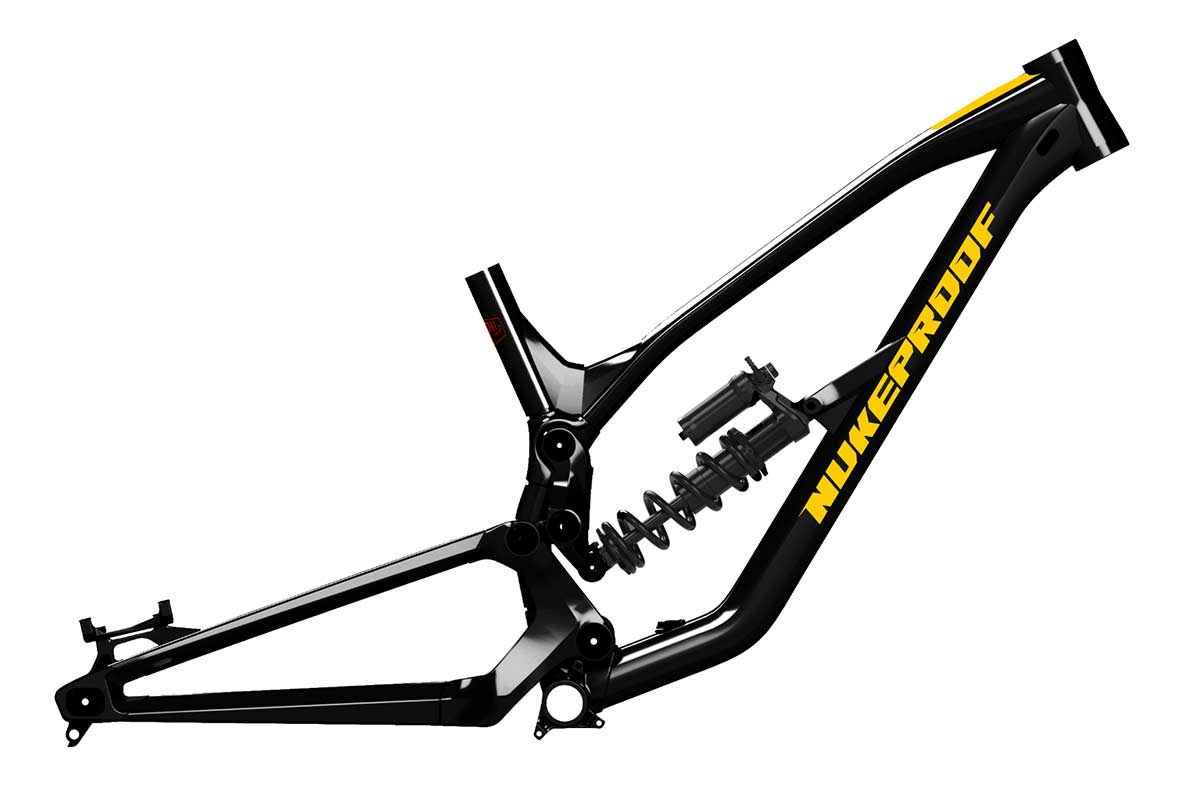After nearly 7 years of using the successful Fallout linkage on their Pulse downhill bike, Nukeproof have broken the trend with a fresh, rider-tuneable linkage platform on the new Dissent. Nukeproof have slowly teased details of the Dissent over the last few months, with Sam Hill winning the Crankworx Garbanzo Downhill race on the prototype, and images of Hope Factory Racing Team rider Adam Brayton’s build coming to light more recently. The Dissent suspension platform was originally conceived by Nukeproof engineers as a concept to test several progression curve theories at once. Turning theory into practice, the new Dissent allows riders to do that for themselves with no fewer than 4 pivot settings to take your pick of.
Nukeproof Dissent, in brief
The Dissent is Nukeproof’s answer to the World Cup Downhill Tracks of 2019. The 27.5″ wheel wagon features 200mm of both fork and rear wheel travel, while the 29″ wheel version has 10mm less rear wheel travel, at 190mm, but the full 200mm in the fork.
The hydroformed 6061 Triple-Butted Aluminium Dissent frame shaves 400 grams off the frame weight of its predecessor, the Pulse, now weighing in at 3.95 kgs. While it may look quite similar to the Pulse upon first glance, there are some very important differences in the suspension platform. Firstly, the rocker link is now positioned on the outside of the seat tube, rather than tucked inside a clamshell as before. This allowed Nukeproof to drop some weight whilst increasing the frame stiffness at the same time. Secondly, the suspension platform also now uses a push rather than a pull link. This reduces the loads and stresses on the frame and again allowed for further weight saving.
The most interesting feature of the Nukeproof Dissent is perhaps the least obvious. Nukeproof say the main pivot flip-chip is designed to work like a bottomless token, but for a coil shock. 4 main pivot positions have been designed for the frame. Changing the flip-chip position alters how progressive the suspension is without simultaneously changing the geometry and travel. Only the sag will differ between settings by around 1%, so changing the setting shouldn’t require a change in spring rate unless the rider is already riding at the upper or lower end of the scale.
Nukeproof Dissent suspension linkage platform explained
It is not uncommon for different world cup riders to want a slightly different ride characteristic to one another, depending on their riding style, and whether they run flat pedals or not. With the new suspension platform, riders can alter the progression of the suspension platform by simply loosening the main pivot and changing the position of the flip-chip.
Position 1: 17% Progression – This is the setting that is most similar to the Pulse frame but with more mid-stroke support. It starts with the least progressive rate off the top, has the most mid-stroke support and then ramps up the least at the end. Apparently this is the position that Sam Hill prefers, and also the one that he raced in at the Garbanzo DH race at Crankworx in 2018.
Position 2: 21% Progression – This is what Nukeproof consider to be the position that will suit most riders most of the time, and as a result this is the setting they recommend and will ship the bike in.
Position 3: 26% Progression – This is the position that Adam Brayton prefers, and has raced to several medals already this year. If it is progressive enough for “Gas to Flat” himself, then it is probably progressive enough for you too!
Position 4: 30% Progression – It starts with the most progressive rate off the top (most supple over small bumps), has the least mid-stroke support, but then ramps up the most at the end. This is the setting recommended for riding bike park with loads of braking bumps and massive jumps and drops.
Nukeproof believe that low anti-squat but good mid stroke support is a winning combo. Position 1 has the lowest anti-squat, but it also has the most mid-stroke support. Therefore, it should still pedal efficiently. Position 4 on the other hand has the highest anti-squat but also has the least mid-stroke support.
The anti-rise of the Dissent is around 100%. This should allow some squat when braking hard into a corner to maintain rider position whilst still offering a good amount of pressure through the tyre into the ground and ensure traction under hard braking.
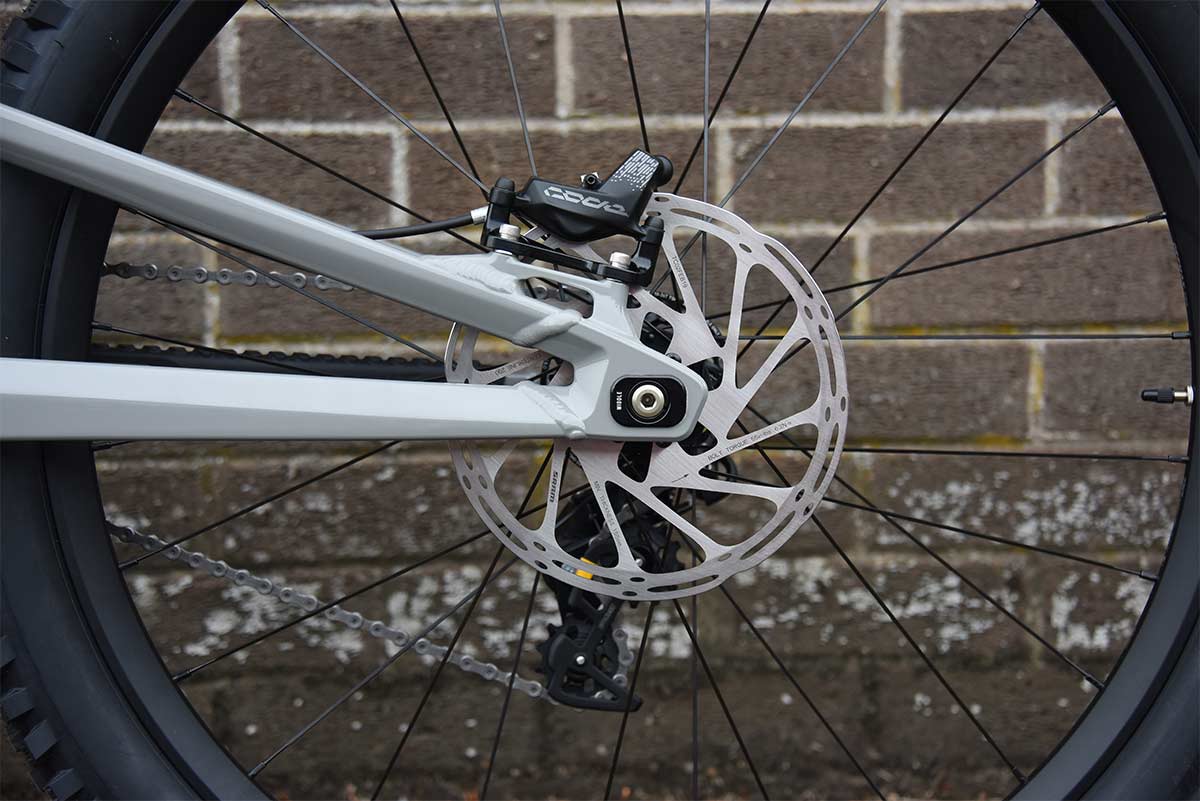
Nukeproof Dissent Sizing and Geometry
The 27.5″ bike will be available in S, M, L and XL sizes, while the 29er is offered in M, L, and XL. This gives a total range of reach from 425mm up to 485mm.
Pricing and Availability
The Nukeproof Dissent will be available in two colorways; Black and yellow, and concrete grey with dark grey. A range of full build options will be available, as well as the frame-only (£1,999 (~$2540)), from November 2019.


